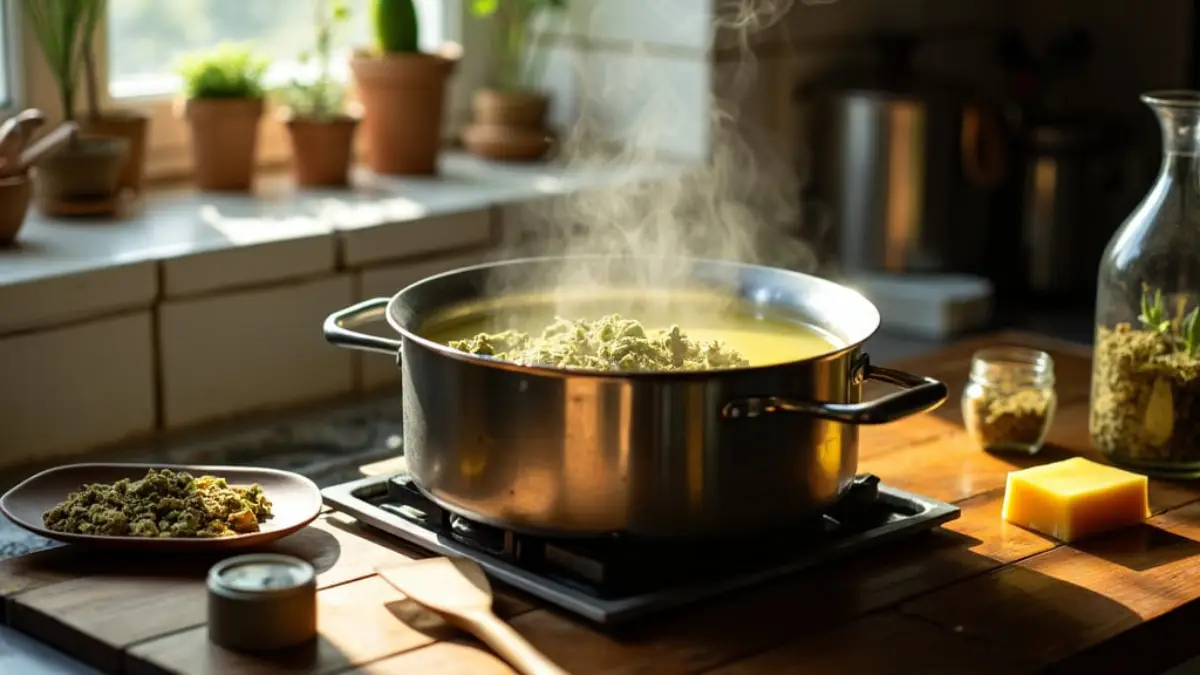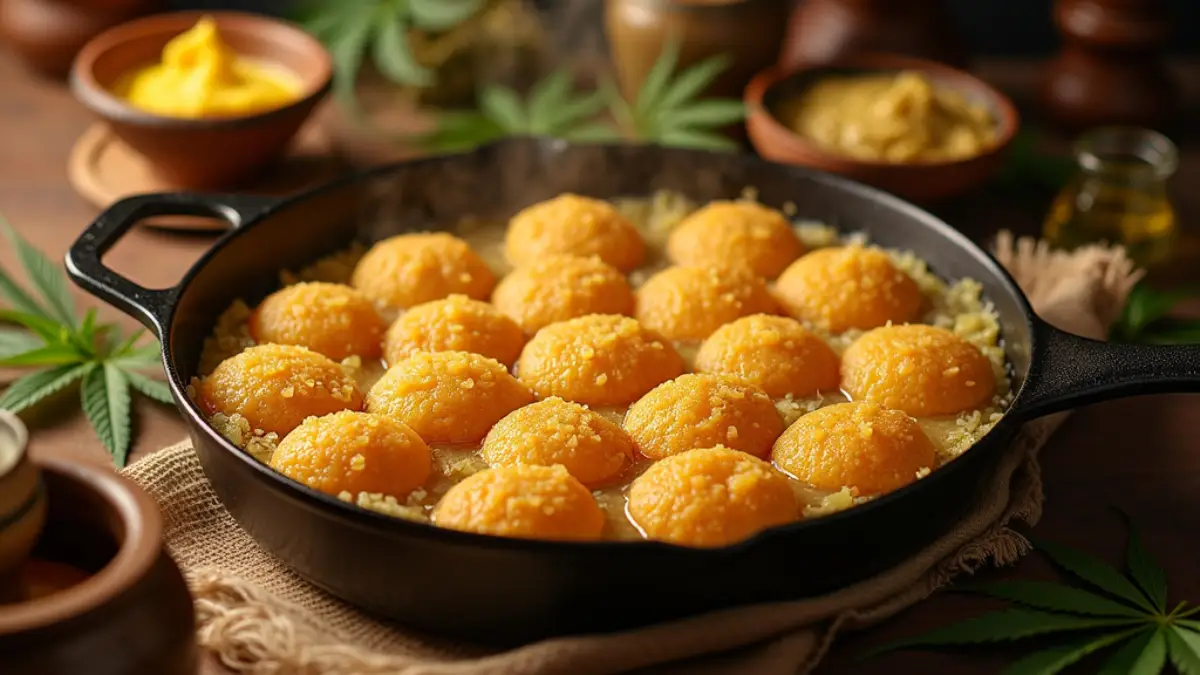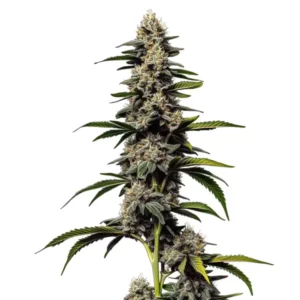Cannabutter lecithin with ghee more potent is a concept gaining popularity among edible enthusiasts and for good reason. Cannabutter, lecithin, and ghee are three ingredients that can significantly elevate the potency of cannabis edibles. When combined, they create a powerful mix that enhances both the effectiveness and enjoyment of your cannabis-infused treats. By knowing how these ingredients work together, you can maximize the benefits of your homemade edibles.
What is Cannabutter?
Ghee cannabutter is a variation of traditional cannabutter, made by infusing clarified butter (ghee) with cannabis. Like regular cannabutter, it contains active compounds like THC and CBD, which bind with the fats in the ghee to create a potent base for a wide range of edibles. Ghee cannabutter is especially popular among health-conscious cannabis ghee enthusiasts because it offers a lactose-free, shelf-stable, and rich alternative that still delivers consistent and reliable effects.
The potency and quality of your cannabutter depend on several factors, including the type of butter, the cannabis strain, and the infusion process. High-quality butter and properly prepared cannabis are crucial for achieving the best results. Additionally, proper storage is important to maintain the potency and freshness of your cannabutter over time.
Promos & Deals
Lecithin’s Impact on Cannabutter Potency
Lecithin acts as a natural emulsifier, helping to blend ingredients that normally wouldn’t mix, like oil and water. When added to cannabutter, lecithin can increase the body’s absorption of cannabinoids. This results in a more potent effect from the same amount of cannabis, making your edibles more efficient and powerful.
In addition to boosting potency, lecithin improves the consistency and texture of cannabutter, ensuring an even distribution of cannabinoids. This uniformity helps achieve consistent dosages in your edibles, reducing the risk of unexpected highs or lows and making your cannabis experience more predictable and enjoyable.

Benefits of Using Ghee Over Regular Butter
When using ghee to make cannabutter, it offers several advantages over regular butter. It has a higher smoke point and a richer flavor, making it ideal for cooking and baking. Ghee is also free from milk solids, which can burn during cooking and negatively impact the potency of your edibles.
Beyond its culinary benefits, ghee has a higher fat content, which improves its ability to bind with cannabinoids. This enhanced binding capacity increases the bioavailability of THC and CBD, leading to more potent and longer-lasting effects. Ghee also has a longer shelf life than regular butter, making it a practical choice for those who want to make cannabutter in larger quantities.
Why Cannabutter with Lecithin and Ghee is More Potent
Combining lecithin with ghee in your cannabutter creates a more homogenous mixture, ensuring that each portion of your edible contains a consistent amount of cannabinoids. This uniformity leads to more reliable effects, making your edibles more predictable in their potency. Additionally, lecithin boosts the absorption of cannabinoids in the body, enhancing the overall potency.
Ghee’s high-fat content is particularly effective at binding with cannabinoids, further increasing their bioavailability. This means your body can absorb and utilize more of the THC or CBD present in the cannabutter, resulting in stronger and longer-lasting effects. This method is ideal for those looking to get the most out of their cannabis edibles without needing to increase the dosage.

How to Make Potent Cannabutter Lecithin with Ghee at Home
Creating cannabutter with lecithin and ghee at home is a simple process that results in a potent and versatile product. Start by decarboxylating your cannabis, a crucial step that activates the cannabinoids, making them more effective when consumed. Proper decarboxylation is key to ensuring you get the full benefits of your cannabis.
Once your cannabis is ready, melt the ghee in a saucepan over low heat. Add the decarboxylated cannabis and allow the mixture to simmer gently for 2-3 hours. This slow cooking process helps to fully infuse the ghee with the active compounds. During the final 30 minutes, when to add lecithin to cannabutter becomes crucial, stir in the lecithin. After cooking, strain the mixture through a cheesecloth to remove any plant material, and store your cannabutter in an airtight container.
Advantages of Using Lecithin and Ghee in Cannabutter
Incorporating lecithin and ghee into your cannabutter recipe offers several benefits. Most notably, this combination increases the potency of your edibles. Lecithin enhances cannabinoid absorption, while ghee provides a rich fat source that binds effectively with THC and CBD, leading to stronger effects with a smaller dose.
Beyond potency, this method also improves the overall quality of your edibles. Ghee adds a richer flavor and smoother texture, making your cannabis-infused treats more enjoyable. The extended shelf life of ghee also means your cannabutter will stay fresh and potent for longer, allowing you to prepare larger batches without worrying about spoilage.
Enhancing Your Cannabis Edibles
Adding lecithin and ghee to your cannabutter is a powerful way to boost the potency and effectiveness of your cannabis edibles. These ingredients work together to improve cannabinoid absorption and create a more uniform mixture, ensuring consistent and reliable effects.
Whether you’re a seasoned cannabis cook or just starting out, using cannabutter lecithin with ghee can take your edibles to the next level. By following the steps outlined in this guide, you can create potent and delicious cannabis-infused products that deliver the results you’re looking for.

FAQs of cannabutter lecithin with ghee more potent
How much lecithin should I add to my cannabutter?
Typically, 1 tablespoon of lecithin per cup of oil or butter is recommended. This amount ensures effective emulsification without overwhelming the mixture.
Can I use regular butter instead of ghee?
Yes, you can use regular butter, but ghee provides several benefits, including a higher smoke point and better cannabinoid binding, which can result in a more potent final product.
Is lecithin necessary for making cannabutter?
Lecithin is not absolutely necessary, but it can significantly enhance the potency and consistency of your cannabutter by improving cannabinoid absorption in the body.
What type of lecithin is best for cannabutter?
Both soy and sunflower lecithin work well, though many prefer sunflower lecithin as it is often non-GMO and considered a healthier option.
How should I store my cannabutter?
Store your cannabutter in an airtight container in the refrigerator for up to a few weeks. For longer storage, freezing is recommended to preserve potency for several months.
















